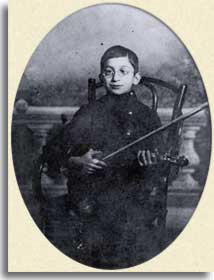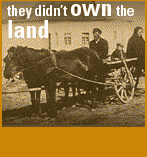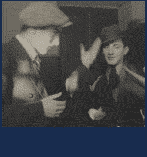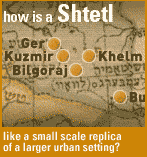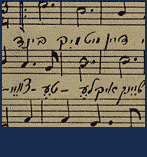

For most, the age of 13 brought with it a lot of new responsibilities. In the Bar Mitzvah ceremony, celebrated in the synagogue, a boy becomes an adult in the community by being called to read from the Torah for the first time. But, because many boys learned Torah and Hebrew from a very early age, these ceremonies did not require the kind of preparation that we are familiar with today. Neither were they celebrated as they are today: most Jewish families could not pay for extraordinary parties. It was a rite of passage, and many of the sons of working class parents - the vast majority - started to work after their bar mitzvah to help supplement the family income. [Girls were not called to the Torah for a bas mitzvah then as they are in many congregations today. In fact the ceremony did not exist in pre-World War II Europe. The first bas mitzvah was celebrated in the United States in 1923, when Judith Kaplan, the daughter of Rabbi Mordecai Kaplan, founder of Reconstructionist Judaism, was called to the Torah at age 12.]
Grade 7 marked the end of compulsory education for children in Polish cities. Many children had to quit school to be apprenticed in a trade such as sewing or carpentry, to help support their families and later on, themselves. Some children learned a trade in special Jewish vocational schools where they were taught skills such as carpentry, textile design and other trades. Gaining admittance into college preparatory "Gymnasium" (high school) was very difficult, since there were often quotas for how many Jews could enroll. Admittance to college from the Gymnasium was even more difficult and restricted for Jewish students.
Love and Longing
Whether teens worked or continued their studies at a gymnasium or yeshive, broad changes were coming to expand their worldview through which they would strive to transform their society for the better. As they were reading new literature, and hearing the discussions of their parents or elders about the world, youth groups organized, energizing a movement that gathered strength in Eastern Europe and Germany throughout the 1920s and 1930s. Just as there were many different school systems, there were almost a hundred separate Jewish youth movements operating in Eastern Europe at that time, each with its own organizational beliefs and goals. The incredible diversity of ideas, which young people were learning about and adopting as their own, reflected and magnified the great social dreams of the time.
It is hard to overstate the impact of these youth movements on history, and on Jewish society as a whole. They prepared thousands of young people to make aliya (go to what was then Palestine) and helped found the State of Israel. They trained fighters who formed resistance and rescue movements during World War II. And these youth movements were the starting ground for leaders who remained important in diaspora Jewish life well into the 20th and 21st centuries.
Youth groups represented the entire political spectrum, according to their attitudes toward the most central questions facing the Jewish community: influential ideas and philosophies such as Socialism, Zionism, and Traditionalism shaped the platforms of all Jewish political parties. Jews selected and blended creatively from these fundamental elements. Socialism and Zionism combined to form several left-wing Zionist youth groups, which called for the creation of a Socialist-Jewish homeland. Zionism and Traditionalism combined to form the Mizrachi party, whose members dreamed of a Jewish homeland that would protect and nurture the right to observe Halakhah (Jewish religious law). Socialist ideas blended with cultural nationalism to produce the Bundist platform. This fluidity, ingenuity and adaptability helped propel politics to the forefront of daily life. No matter what its basic creed, each political platform shared a concern for the future of the Jewish people, and existed at a time of political engagement and diversity unlike any other in Jewish history.
From these paths youth groups arose: on the left, Tsukunft  (Future), the youth group of the Bund, was a Socialist, non-Zionist group. Morgnshtern
(Future), the youth group of the Bund, was a Socialist, non-Zionist group. Morgnshtern  was the Bundist sports group for children as well as young teenagers; the Bund also had another children's group, known as SKIF
was the Bundist sports group for children as well as young teenagers; the Bund also had another children's group, known as SKIF  (Socialist Children's Union). HeHalutz (The Pioneer) and Hashomer Hatzair (The Young Scout) were the largest Zionist socialist groups. But Zionist variations were many: Gordonia
(Socialist Children's Union). HeHalutz (The Pioneer) and Hashomer Hatzair (The Young Scout) were the largest Zionist socialist groups. But Zionist variations were many: Gordonia  , Dror
, Dror  , and others were some of those early examples. Some Zionist groups were less inclined to incorporate socialist ideals; some embraced more issues of culture rather than political goals. Most had a basis in scouting and pioneering and embraced physical labor as a reconnection to the earth and to more natural, land rooted forms of living. Betar
, and others were some of those early examples. Some Zionist groups were less inclined to incorporate socialist ideals; some embraced more issues of culture rather than political goals. Most had a basis in scouting and pioneering and embraced physical labor as a reconnection to the earth and to more natural, land rooted forms of living. Betar  (Joseph Trumpledor Association) was a right-wing Zionist, anti-Marxist group. HaNoar HaIvri Akiba (Hebrew Akiva Youth) was the Zionist-religious-socialist option. In the center, Tzofim
(Joseph Trumpledor Association) was a right-wing Zionist, anti-Marxist group. HaNoar HaIvri Akiba (Hebrew Akiva Youth) was the Zionist-religious-socialist option. In the center, Tzofim  (Scouts) was a nonpolitical, scouting group, while the Maccabi
(Scouts) was a nonpolitical, scouting group, while the Maccabi  was founded as a nonpolitical sporting group.
was founded as a nonpolitical sporting group.







